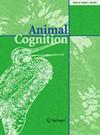Using differential reinforcement and extinction to increase specificity in cheetah scat detection dogs
Abstract
Detection dogs are trained using limited samples and then expected to generalize this ability to recognize wild samples while maintaining specificity to a target category. Such specificity is critical because dogs are often used to locate targets that are difficult to visually identify. Little is known about how to regain target specificity when false alerts become frequent or established. This case study assessed the training of two conservation dogs that alerted to off-target caracal (Caracal caracal) and leopard (Panthera pardus) scat samples during training to detect cheetah (Acinonyx jubatus) scat. The dogs were trained using an extinction-based differential reinforcement protocol consisting of the non delivery of reinforcement to reduce false alerts to caracal and leopard scats while maintaining sensitivity to cheetah scats. All training was conducted in situ in Samburu County, Kenya, by local handlers under the guidance of trainers. Sessions were filmed and coded for false alerts, true alerts, and where possible, misses and correct dismissals. Within four training sessions, both dogs exhibited an extinction burst demonstrated by an increase and then decrease in both the number and duration of false alerts. They continued to make fewer false alerts for the remainder of the training program. These results demonstrate the ability to reduce false alerts in operational detection dogs via extinction coupled with systematic reinforcement of desired behaviors. This case study highlights the importance of record-keeping and handling protocols for training samples. To our knowledge, this study represents the first publication on an extinction protocol to reduce false alerts in detection dogs.

 求助内容:
求助内容: 应助结果提醒方式:
应助结果提醒方式:


